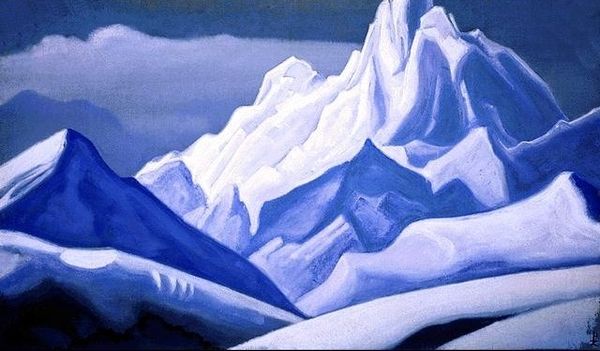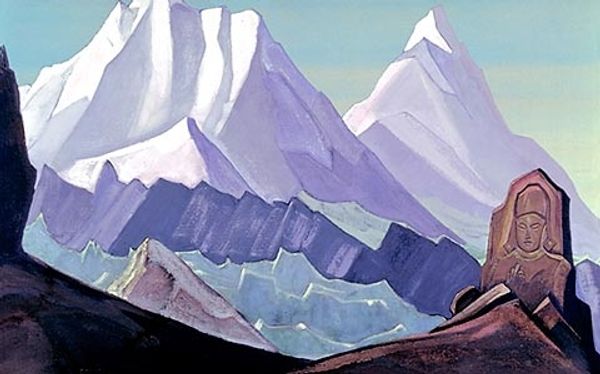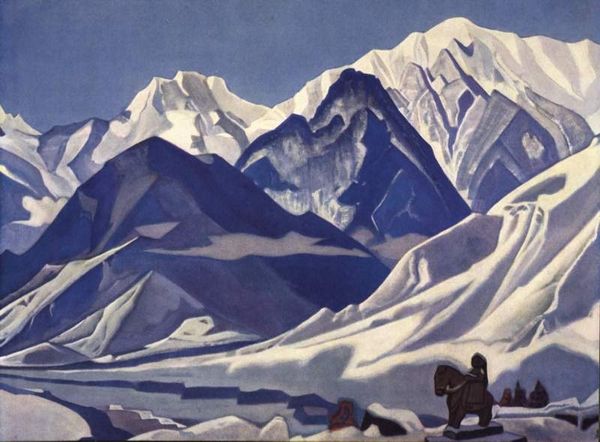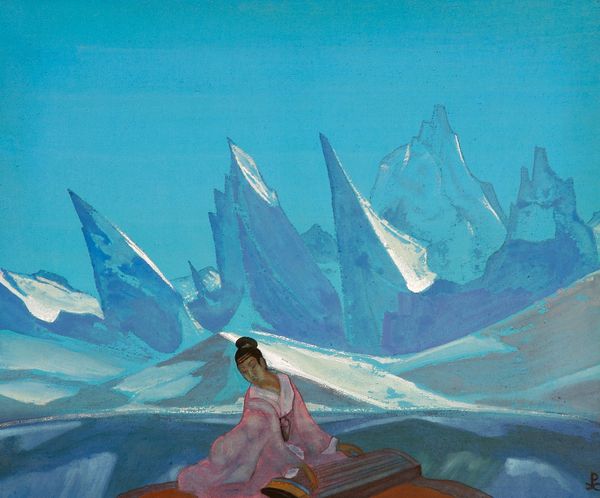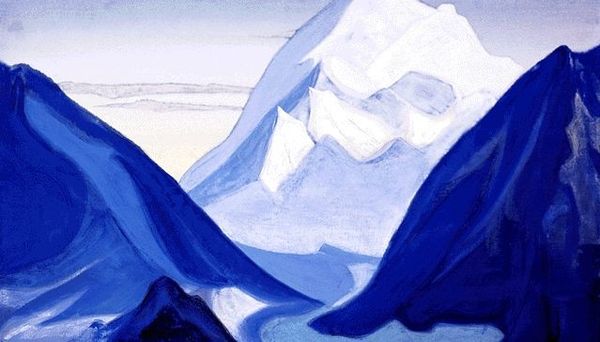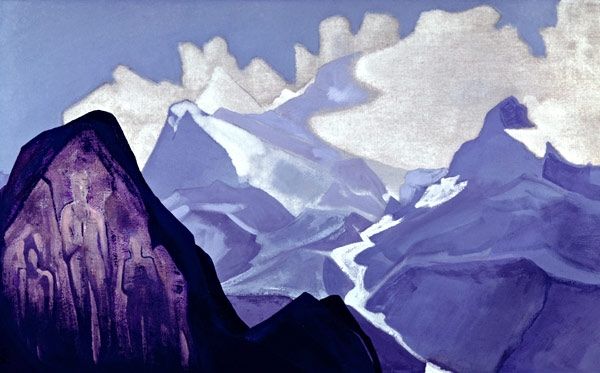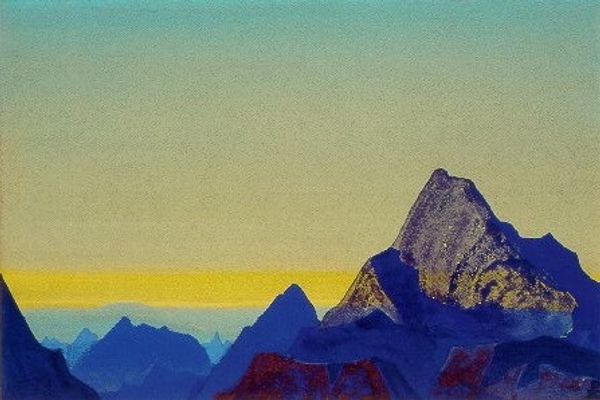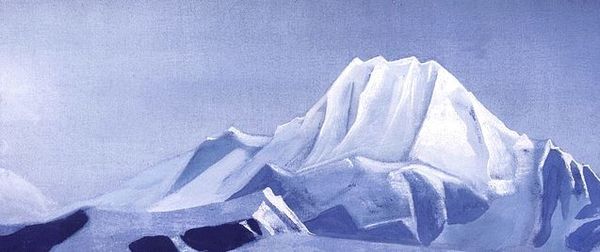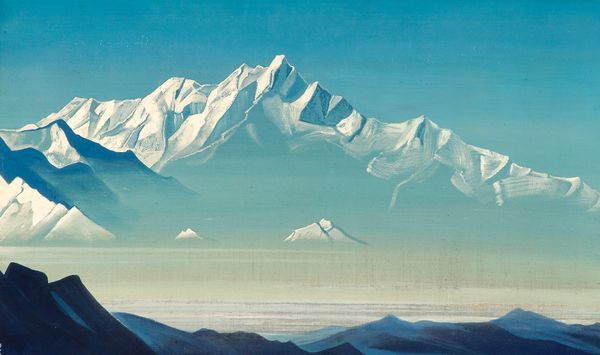
Dimensions: 92 x 122 cm
Copyright: Public domain
Editor: We’re looking at "On the Heights (Tummo)," a tempera painting by Nicholas Roerich from 1936. It’s dominated by cool blues and shows a figure in meditation against a backdrop of formidable mountains. I’m immediately struck by the geometric quality of the peaks, and the sense of stillness. How do you read this composition? Curator: Formally, observe how Roerich uses a restricted palette to emphasize the painting's structure. Notice how the repetition of triangular forms, in both the mountains and the figure's posture, creates a rhythmic visual echo. The placement of the figure at the apex provides a focal point, concentrating the viewer's gaze. Do you see how the color saturation directs our sightlines? Editor: Yes, the intense blue of the sky really contrasts with the pale mountains, almost flattening the space. It pushes the figure forward, too. Curator: Precisely. The composition sacrifices depth for symbolic resonance. What appears to be a landscape transcends simple representation. Consider the artist’s choices – the reduction of form to essential shapes, the limited color range… These emphasize a spiritual rather than literal interpretation. How might the materiality of tempera contribute to this effect? Editor: Because it's matte, there's a lack of sheen which feels appropriate for the subject of spiritual elevation. Curator: Exactly. The painting denies illusionism in favor of iconic presence. This work compels the viewer to contemplate the relationship between the physical and the transcendental, rendered through simplified form. Editor: It's amazing how a painting so seemingly straightforward in its representation can hold so many layers of meaning simply through its formal elements. Curator: Indeed. A reminder that visual language is not just about what is depicted, but how.
Comments
No comments
Be the first to comment and join the conversation on the ultimate creative platform.

